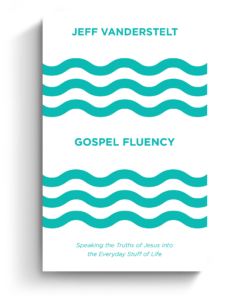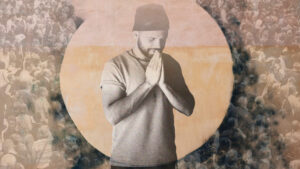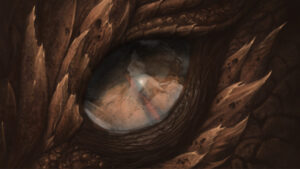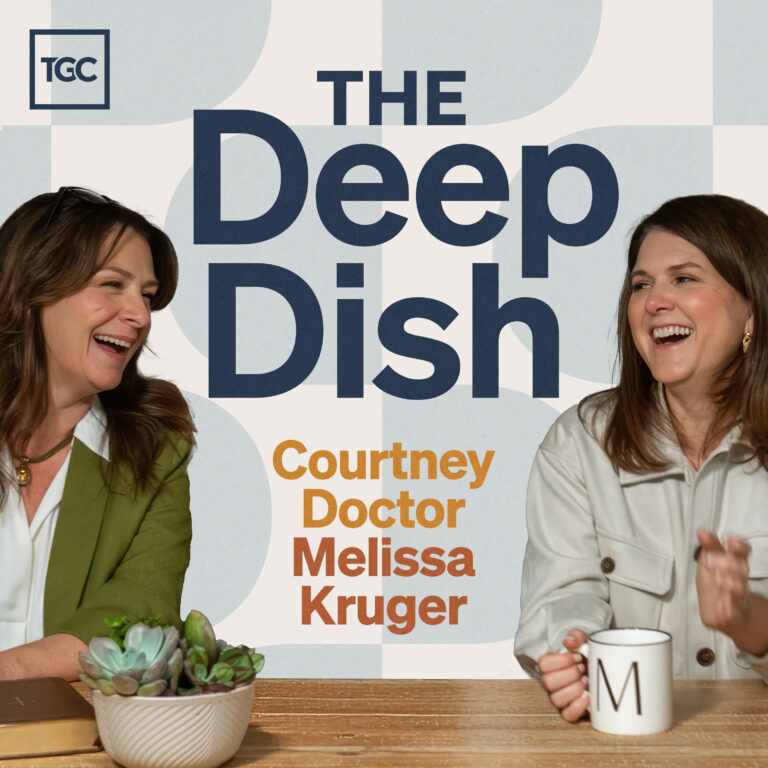In recent evangelical publications, there has been a good amount of attention paid to the merits of literature, reading, and the imagination. A good thing! But in these discussions, contemporary literature (defined here as anything written since 1980) is often overlooked. When contemporary authors are mentioned, the choices are usually limited to Wendell Berry, Marilynne Robinson, and Annie Dillard—all worthy and important suggestions. But does the contemporary period have nothing more to offer? Do the “common grace” gifts contained in literature only apply to the classics?
I was a bit surprised by what I found when I first took a graduate class in contemporary literature. Works by authors like Margaret Atwood, Michael Ondaatje, and Martin Amis were full of both biblical allusions and also complex philosophical and religious questions. They engaged these questions while also rendering some of the defining traumas of our age: coping with the perceived death of God, the institutionalized racism of the Holocaust and the Jim Crow era, the threat of misogyny even in the modern age.
Do the ‘common grace’ gifts contained in literature only apply to the classics?
Perhaps many of these contemporary works are overlooked because in their raw honesty, they sometimes use profanity and speak openly about sexuality. And this is an understandable objection. I would argue that, in spite of this, many of these works are deeply moral and even have a Christian ethos. As with any work of art, we must look at the context and the overall narrative, asking what the author is trying to say to us. Is it true? Can it cause us to see ourselves and our culture more clearly? Perhaps even convict us? Does it help us learn to better love our neighbors?
The eight works of contemporary fiction listed below have each challenged me spiritually, forcing me to grapple with my own (sometimes false) perceptions of God and others. They ask many of the “right” questions, revealing the complexities of faith, relationships, doubt—even if they often don’t provide answers. Many of them deal with the ways humans cope with trauma inflicted by those who ignore the imago Dei, and others expose the sins of Western culture and consumerism, including in the church. I commend each of them to you.
1. Life After God (1994) by Douglas Coupland
“My secret is that I need God—that I am sick and can no longer make it alone.”
Douglas Coupland, famed author of 1991’s Generation X (which coined the term for popular usage), frequently laments the “secular” aspects of his suburban Vancouver upbringing. And this lament, coupled with a desire for “transcendence and epiphany,” is at the heart of his collection of short stories, Life After God. Each story focuses on broken characters, who are unable to love and connect, as they desperately respond in sometimes self-destructive ways to the “religious impulse” inside. The last story of the collection is full of rich, biblical resonances, as its narrator, Scout, recognizes that his spiritual “sickness” is beyond human repair. This book reminds readers that all human beings have a desire for God, even when they lack theological language for naming that desire.
2. Beloved (1987) by Toni Morrison
“Anything dead coming back to life hurts.”
According to its dedication, Morrison’s Pulitzer- and Nobel Prize-winning novel is written as a memorial for the “60 million and more” Africans who died during the Atlantic Slave Trade. Beloved is not a straightforward fictional history, but a disorienting ghost story that uses its unconventional form to enable the reader to “participate” in the non-linear nature of trauma. Morrison built the novel around a historical newspaper fragment about escaped slave Margaret Garner, using Garner’s story to imagine the lives of some of the many traumatized voices silenced by history. The ghost-story aspect brilliantly demonstrates how the novel’s characters are haunted by the memories of their dehumanization. To regain a sense of their humanity they must re-narrate their painful memories to move forward—a rebirth that only comes through a great deal of pain.
3. What Is the What (2006) by Dave Eggers
“I will tell these stories. . . because to do anything else would be something less than human.”
Dave Eggers is most known for his deeply ironic and deeply sincere A Heartbreaking Work of Staggering Genius, which made him a literary hipster poster boy of sorts. Yet his 2006 fictional “autobiography” of Valentino Achak Deng contains no trendy irony; only the harrowing, moving story of one of the Lost Boys of Sudan. Deng and Eggers worked together to try to assemble the fragmented pieces of Deng’s childhood memories, tracing both his escape from the Sudanese civil war and also the many prejudices and difficult he faced as a refugee in America. The novel is also focused on the power of storytelling and how telling one’s story, as well as listening to their stories of others, helps us see the image of God in one another.
4. How to Be Good (2001) by Nick Hornby
“When I look at my sins . . . I can see the appeal of born-again Christianity. I suspect that it’s not the Christianity that is so alluring; it’s the rebirth.”
On one of my first trips to London, I remember seeing what seemed to be every other person on the tube reading High Fidelity, Nick Hornby’s British bestseller. Reading Hornby is easy and fun; his books are those rare bestselling plane reads that actually ask meaningful questions. Not unlike John Irving, Hornby has a Dickensian flare for creating warm, colorful characters with a sense of both humor and pathos. How to Be Good is about a doctor who has an affair and must grapple with how she, a “good” person who saves lives every day, could also do something so bad. Is she “bad” or is she “good”? Like filmmaker Woody Allen, Hornby often asks whether we can call something “good” or “bad” without an objective standard of morality. Where do these standards come from in a secular contemporary age? Is God the only answer?
5. White Noise (1985) by Don DeLillo
“This is the whole point of technology. It creates an appetite for immortality on the one hand. It threatens universal extinction on the other.”
DeLillo’s dark, clever satire of academia and popular culture brilliantly examines the ways the “white noise” that fills our daily lives—television ads, the buzz of a crowded mall, the radio weather report—teaches us how to live. These commodified spaces help us create empty “religious” rituals based on the things we own or want to own, be it an education or a new pair of jeans. The novel’s protagonist, Jack Gladney, is a professor of Hitler studies at “The College on the Hill,” an ironic vocation by a man who is paralyzed by a fear of death. In an attempt to save himself and his family during an “airborne toxic event,” Gladney is forced to consider the relationship between technological progress and physical and spiritual death. DeLillo constantly reminds us that the bright, endless lure of owning “things” cannot protect us from death. At the same time, he seriously considers why faith is a real need in this “artificial” age.
6. Blankets (2003) by Craig Thompson
“Something about being rejected at Church Camp felt so much more awful than being rejected at school.”
Craig Thompson’s autobiographical graphic novel is a sad, beautifully illustrated story of his loss of faith. Growing up in an often abusive fundamentalist home and church, his desire to create art was mocked and belittled, and this is a large part of what led him away from faith. His story is a troubled reflection of the ways the role of the artist in the church has often been misunderstood, at best, or viewed suspiciously, at worst. Christian readers will be challenged to rethink the ways artists can speak prophetically to the church. The book also reminds us that insular Christian “culture” can easily depart from the actual teachings of Christ, resulting in abuse rather than love.
7. Maus I & II (1980–1991) by Art Spiegelman
“No matter what I accomplish, it doesn’t seem like much compared to surviving Auschwitz.”
When I first read Maus I, I felt uncomfortable about a graphic novel about the Holocaust in which Jews are depicted as mice and Nazis as cats. But Art Spiegelman’s Maus I and Maus II are deeply reverent, honest, and important contributions to the canon of Holocaust literature. Spiegelman is the child of two Holocaust survivors, victims of the unspeakable evils of the death camps. Maus is the story of his father Vladek’s suffering, framed by his own story of recording his father’s memories and constructing them into this book. The novel is about secondary trauma, the ways a child of a trauma survivor absorbs the trauma he did not experienced firsthand. As his father “bleeds history,” Art is left stained in ways he must process through the writing of both of their stories.
8) The Hate U Give (2017) by Angie Thomas
“Your voices matter, your dreams matter, your lives matter. Be the roses that grow in the concrete.”
Thomas’s first young adult novel, now a 2018 film, is the story of a teenager, Starr Carter. She’s a bright girl with a loving family who attends a predominantly white private school, far from the neighborhood she calls home. As Starr must negotiate both “white” and “black” spaces, she loses part of herself as she continually adapts. Early in the novel, Starr’s childhood friend is shot and killed by a police officer, and the rest of the story traces her coming of age in the Black Lives Matter era. Starr ultimately finds her previously muffled voice as she bonds more closely with her family and fights for justice in both of her parallel worlds. Regardless of political leanings or preconceived notions of Black Lives Matter, this book is an important read that will grow the reader’s capacity for empathy for individuals experiencing the effect of racial trauma.
“The Most Practical and Engaging Book on Christian Living Apart from the Bible”
 “If you’re going to read just one book on Christian living and how the gospel can be applied in your life, let this be your book.”—Elisa dos Santos, Amazon reviewer.
“If you’re going to read just one book on Christian living and how the gospel can be applied in your life, let this be your book.”—Elisa dos Santos, Amazon reviewer.
In this book, seasoned church planter Jeff Vanderstelt argues that you need to become “gospel fluent”—to think about your life through the truth of the gospel and rehearse it to yourself and others.
We’re delighted to offer the Gospel Fluency: Speaking the Truths of Jesus into the Everyday Stuff of Life ebook (Crossway) to you for FREE today. Click this link to get instant access to a resource that will help you apply the gospel more confidently to every area of your life.





























